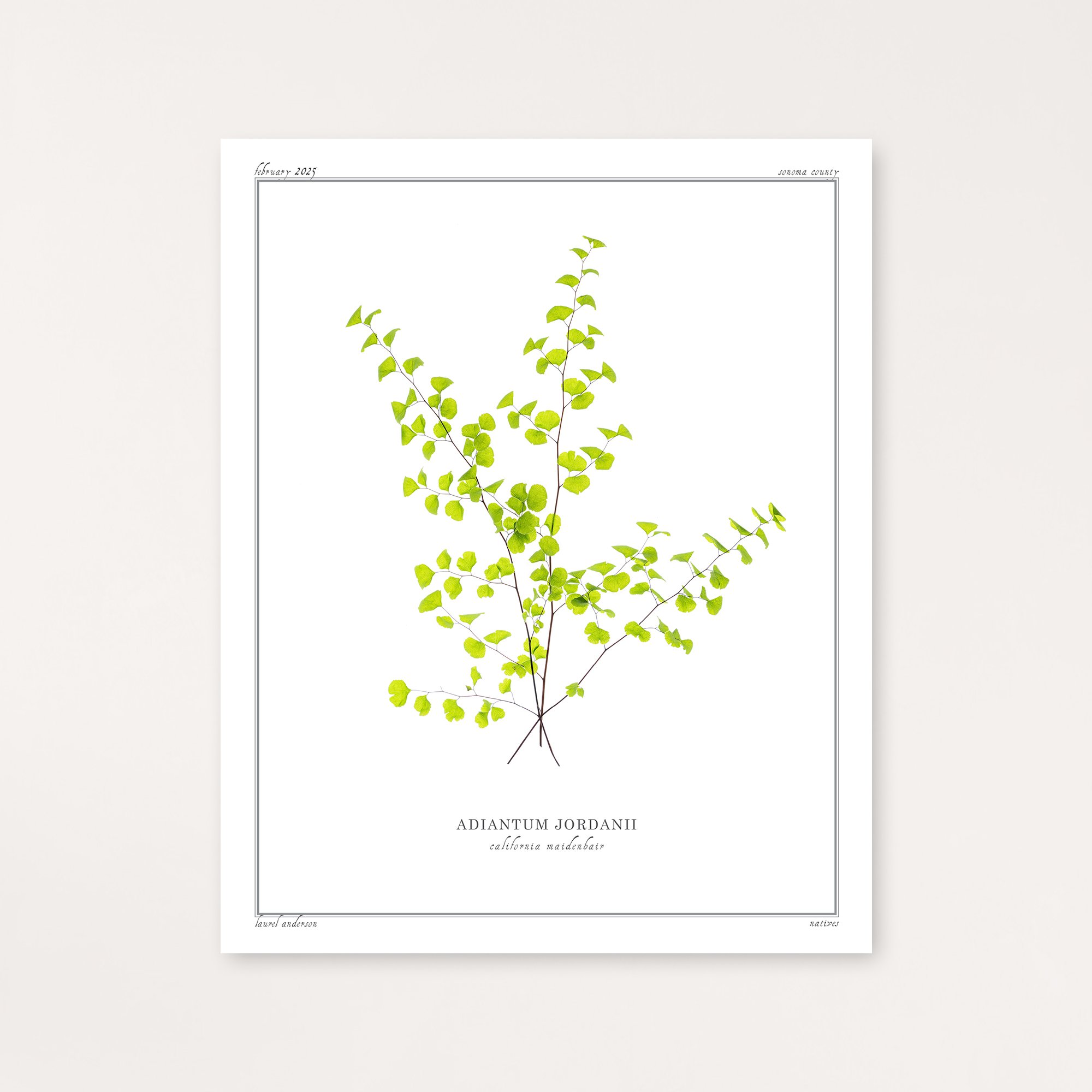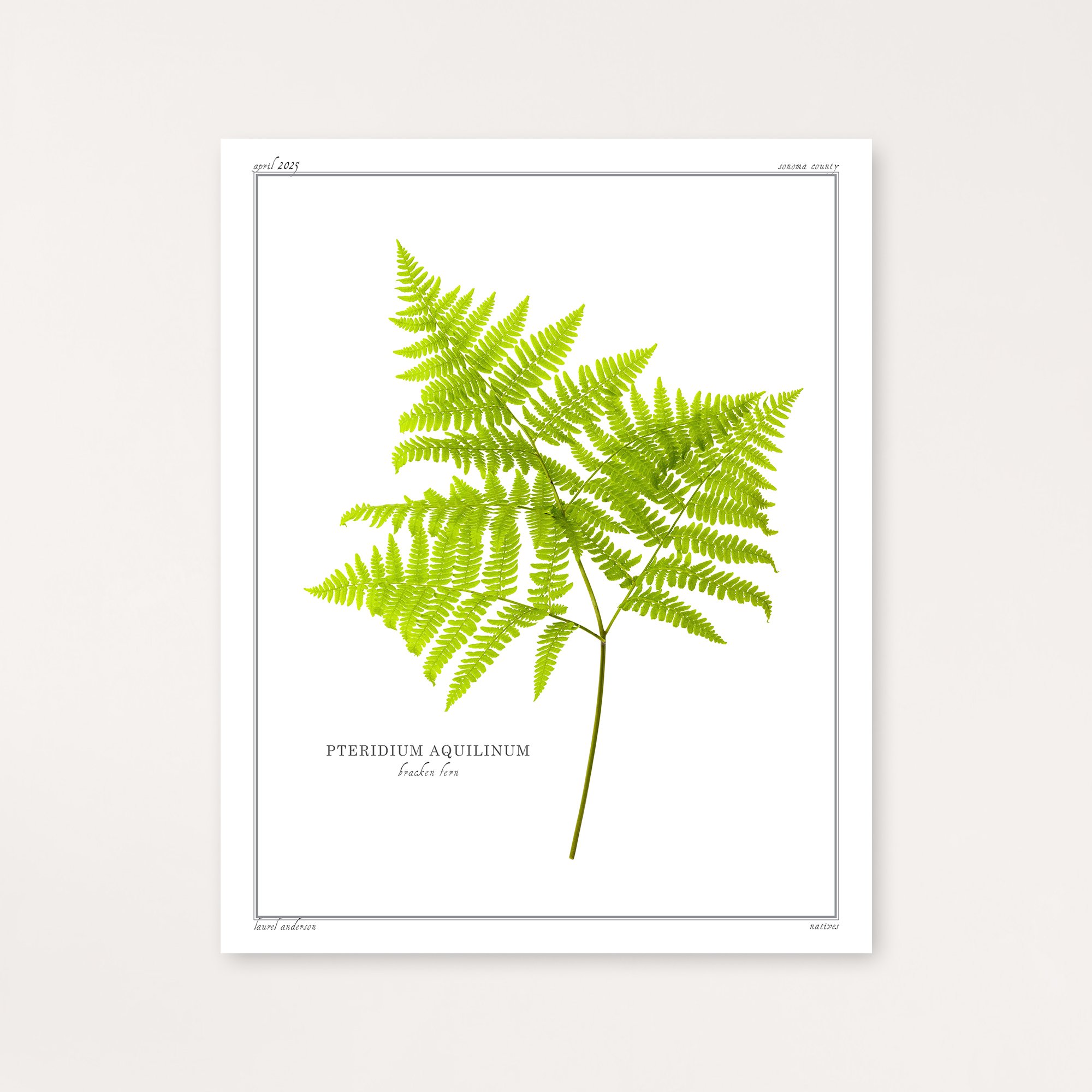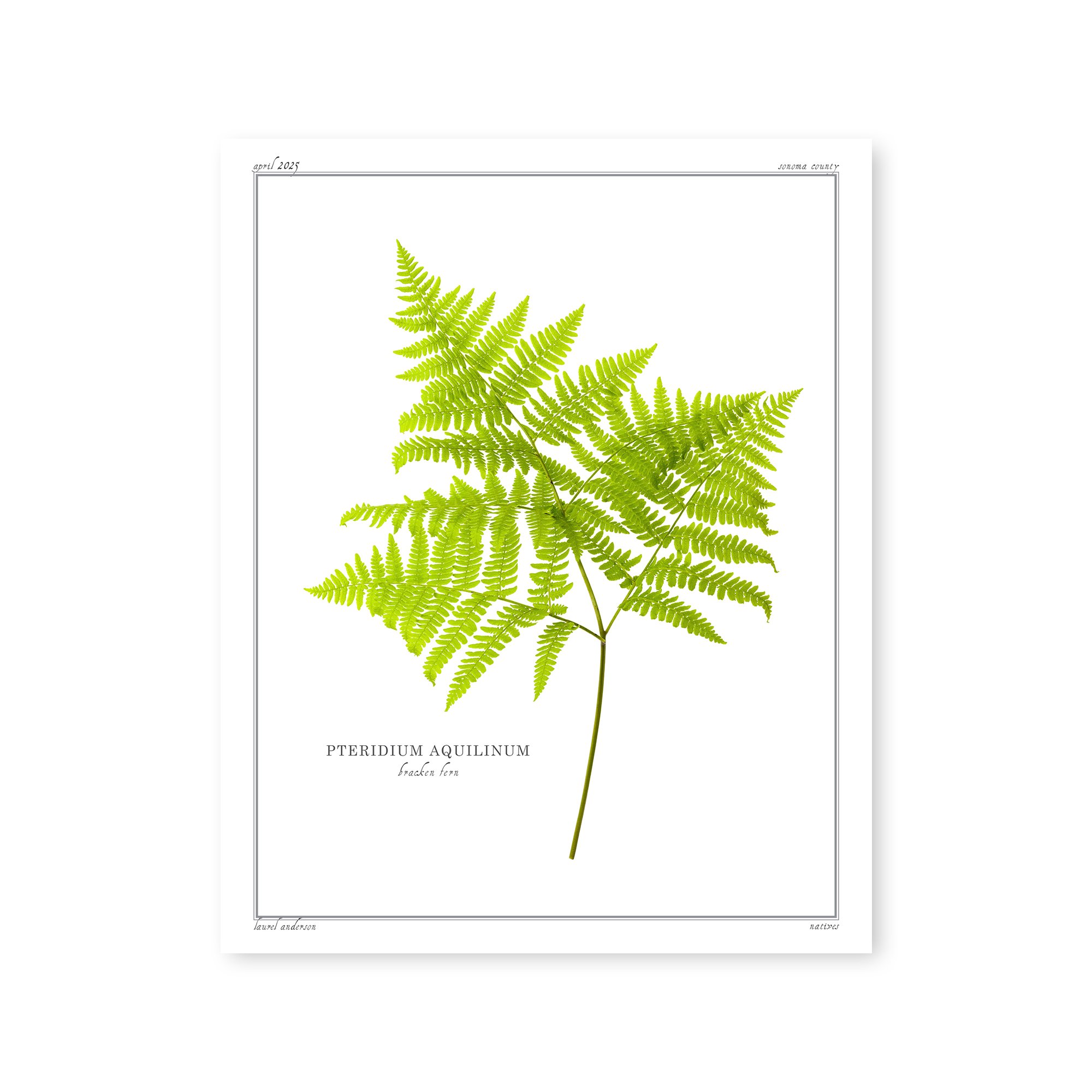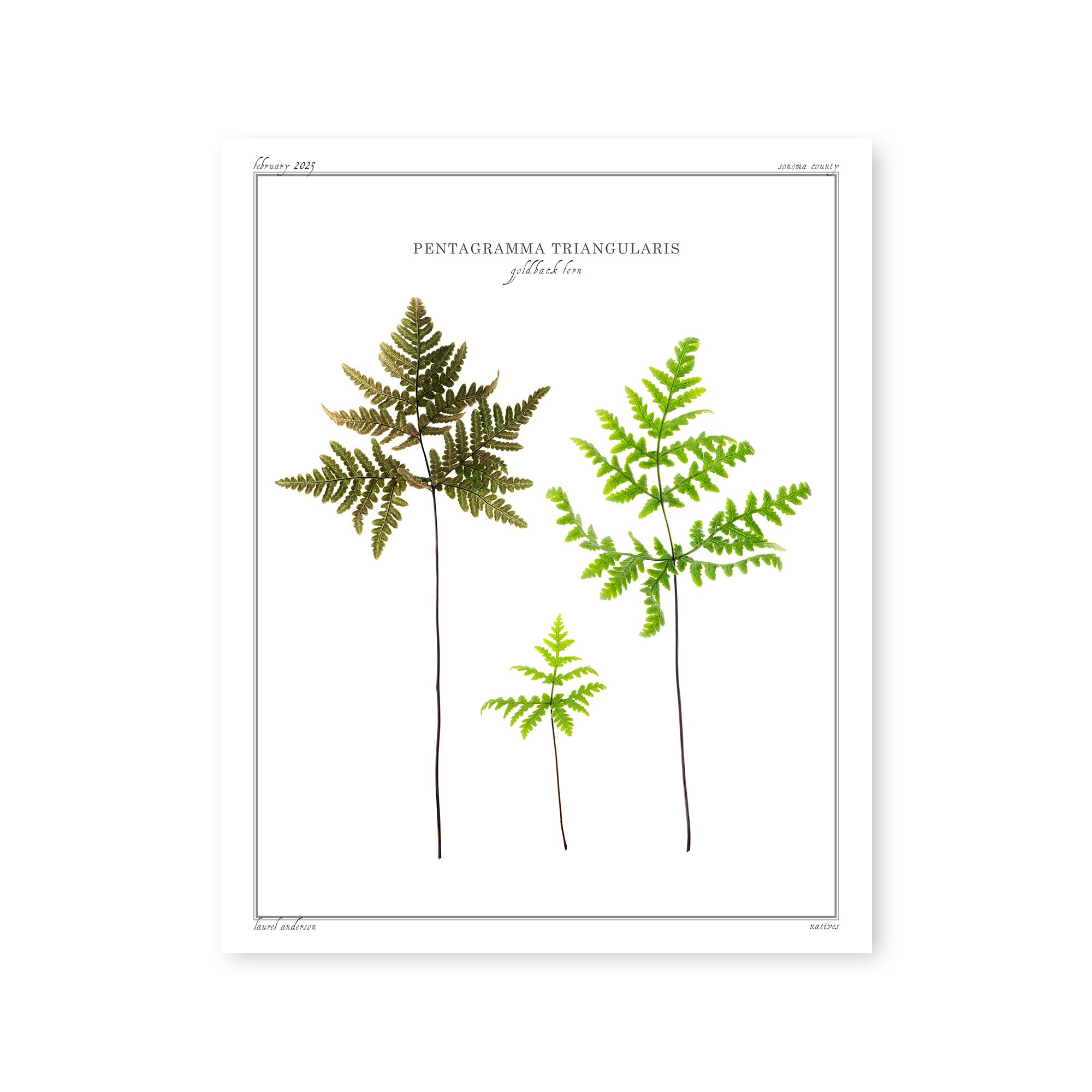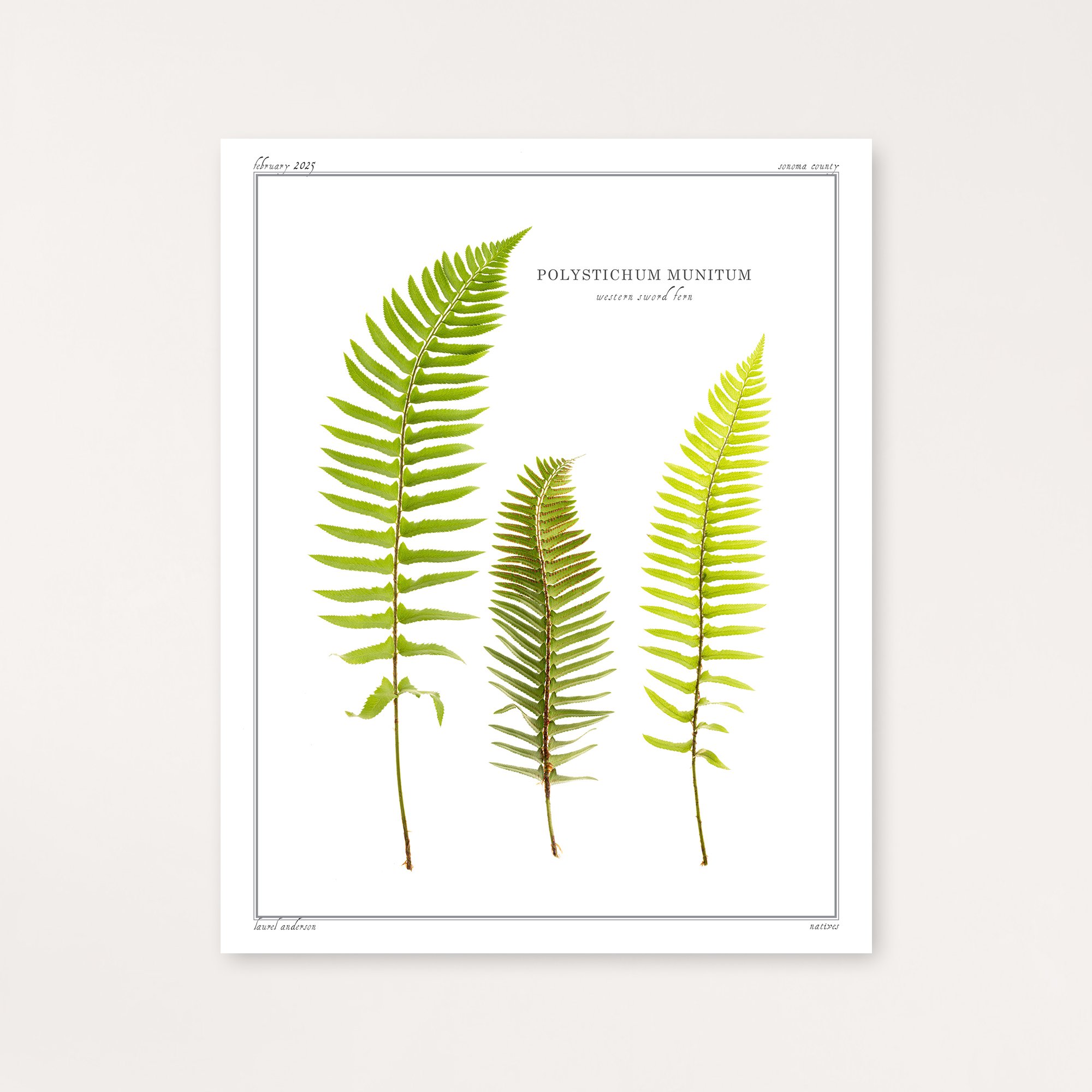 Image 1 of 2
Image 1 of 2

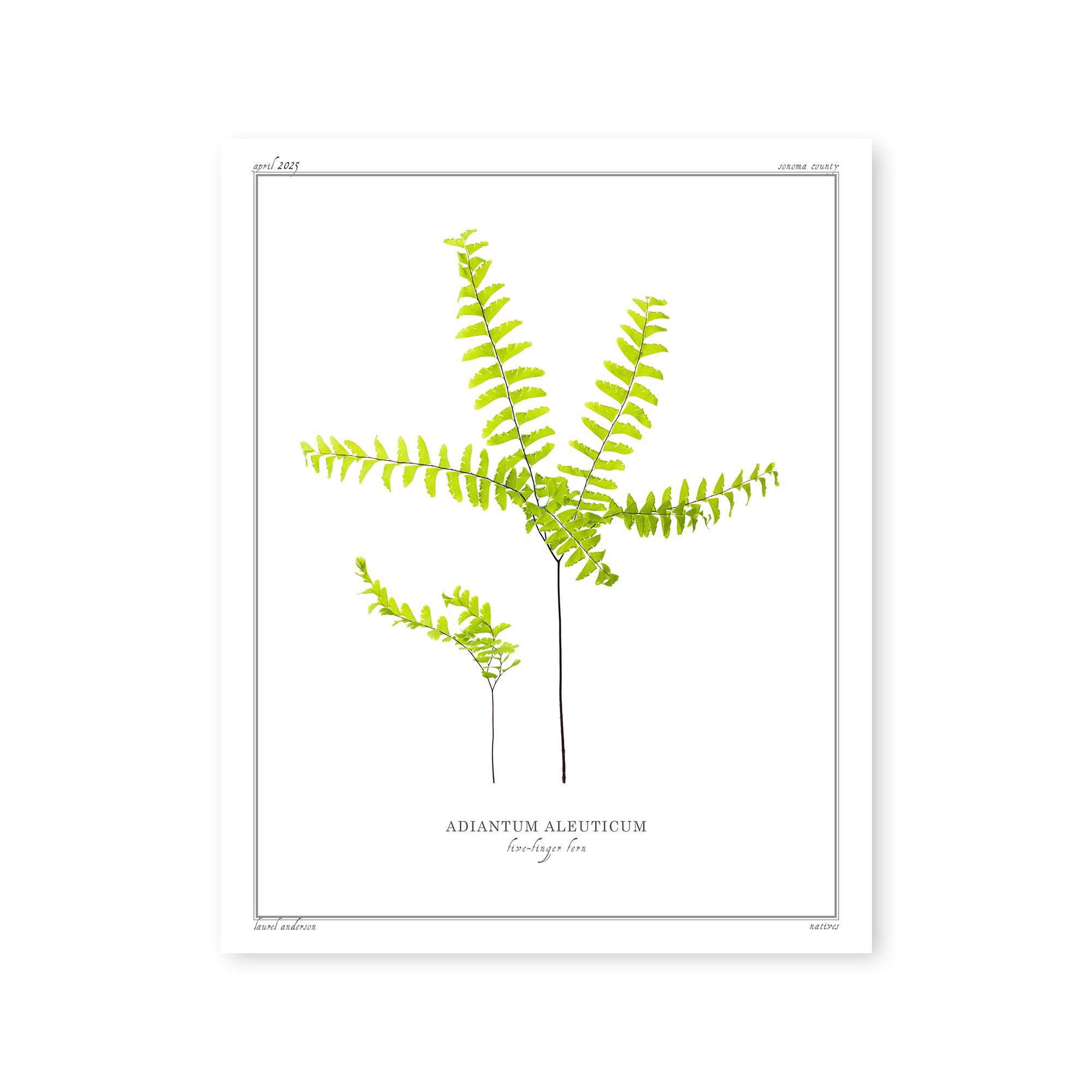 Image 2 of 2
Image 2 of 2



Five-Finger Fern
Five-Finger Fern, Adiantum aleuticum, also called Western Maidenhair Fern, is a graceful native fern found from Alaska's Aleutian Islands to California, recognized by its distinctive fan-shaped fronds held on shiny purplish-black stems.
California indigenous peoples used the stems for pierced earrings, either alone or with feathers, inserting them into the ear lobe to keep the hole from closing. The leaves were also chewed to treat internal wounds, chest pain, or stomach ailments. Coastal tribes along the Pacific flattened the dark stems for decorative imbrication in their intricate basketry designs.
It provides valuable microhabitat, offering shelter and resting places for arthropods, amphibians, and small birds that frequent the forest floor.
Each print is made by the artist using archival quality pigment ink on Moab's Entrada Rag Bright 300 paper.
Five-Finger Fern, Adiantum aleuticum, also called Western Maidenhair Fern, is a graceful native fern found from Alaska's Aleutian Islands to California, recognized by its distinctive fan-shaped fronds held on shiny purplish-black stems.
California indigenous peoples used the stems for pierced earrings, either alone or with feathers, inserting them into the ear lobe to keep the hole from closing. The leaves were also chewed to treat internal wounds, chest pain, or stomach ailments. Coastal tribes along the Pacific flattened the dark stems for decorative imbrication in their intricate basketry designs.
It provides valuable microhabitat, offering shelter and resting places for arthropods, amphibians, and small birds that frequent the forest floor.
Each print is made by the artist using archival quality pigment ink on Moab's Entrada Rag Bright 300 paper.

